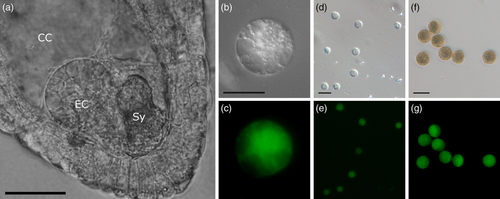The formation of a zygote by the fusion of egg and sperm involves the two gametic transcriptomes. In flowering plants, the embryo sac embedded within the ovule contains the egg cell, whereas the pollen grain contains two sperm cells inside a supporting vegetative cell. The difficulties of collecting isolated gametes and consequent low recovery of RNA have restricted in‐depth analysis of gametic transcriptomes in flowering plants. We isolated living egg cells, sperm cells and pollen vegetative cells from Oryza sativa (rice), and identified transcripts for approximately 36 000 genes by deep sequencing. The three transcriptomes are highly divergent, with about three‐quarters of those genes differentially expressed in the different cell types. Distinctive expression profiles were observed for genes involved in chromatin conformation, including an unexpected expression in the sperm cell of genes associated with active chromatin. Furthermore, both the sperm cell and the pollen vegetative cell were deficient in expression of key RNAi components. Differences in gene expression were also observed for genes for hormonal signaling and cell cycle regulation. The egg cell and sperm cell transcriptomes reveal major differences in gene expression to be resolved in the zygote, including pathways affecting chromatin configuration, hormones and cell cycle. The sex‐specific differences in the expression of RNAi components suggest that epigenetic silencing in the zygote might act predominantly through female‐dependent pathways. More generally, this study provides a detailed gene expression landscape for flowering plant gametes, enabling the identification of specific gametic functions, and their contributions to zygote and seed development.

Transcriptomes of isolated Oryza sativa gametes characterized by deep sequencing: evidence for distinct sex‐dependent chromatin and epigenetic states before fertilization
Anderson SN, Johnson CS, Jones DS, Conrad LJ, Gou X, Russell, SD, Sundaresan V
2013.
The Plant Journal